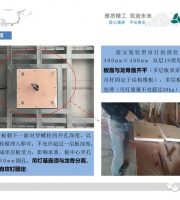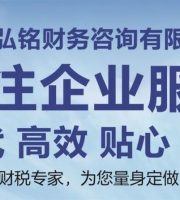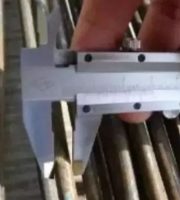(4) Using the additive method, add a chemical agent that can reduce the freezing point of water to the concrete mixture in the air temperature above – 10 ℃, so that the concrete is still in the liquid phase state under the negative temperature, and the hydration can continue, so as to continue to increase the strength of the concrete.
The emitted carbon dioxide will carbonize the surface of newly poured concrete and affect the quality.
However, due to the need for special boiler equipment, the cost is high, the heat loss is large, and the working conditions are not ideal.
For large volume structures, in order to prevent the mixture from freezing and setting too slowly, the molding temperature should not be too low.
One or more construction methods shall be combined according to the site conditions.
After pouring, the maturity method or other test methods should be used to monitor the concrete strength from time to time until the predetermined strength requirements (such as critical anti freezing strength, demoulding strength and prestressed tensioning strength) are met, and the above measures can be stopped.
Second, try to reduce the water cement ratio and slightly increase the amount of cement, so as to increase the hydration heat and shorten the time to reach the age strength.
The plastic film curing can separate the concrete from the air, and the water is not easy to evaporate to complete the hydration, which can effectively reduce the cracking phenomenon..
The test results show that early strength Portland cement should be used.
(2) In practice, the selection of concrete construction methods in winter shall be based on the air temperature during construction, the condition of engineering structure (quantities, thickness and exposure of structure), the urgency of construction period, the variety and price of cement, the performance and price of early strength agent, water reducer and antifreeze agent, the performance and price of thermal insulation materials, and the conditions of heat source, To choose a reasonable construction method.
Generally speaking, the curing temperature of concrete should be hot rather than cold, the temperature when pouring into the formwork should be cold rather than hot, and the same is true for construction in winter.
In order to ensure the pouring temperature of concrete, the aggregate can be stored in a warm place, and the aggregate and water can be heated if necessary.

(2) The heat storage method is mainly used in projects with thick structure at an air temperature of about – 10 ℃.
The above four winter construction methods have their advantages and disadvantages, and the scope of application is also restricted by certain conditions.
An ideal scheme should use the shortest construction period and the lowest construction cost to obtain the best project quality, that is, the optimization of construction period, cost and quality.
The disadvantage is large electric energy consumption.
The method is as follows: heat the raw materials (water, sand and stone) so that the concrete can reserve considerable heat after mixing, transportation and pouring, so as to make the hydration and heat release of cement faster, and strengthen the thermal insulation of concrete to ensure that the newly poured concrete has sufficient frost resistance before the temperature drops to 0 ℃.
(3) Precautions for winter construction: for the recently poured concrete, due to the strong wind and the decrease of temperature, the concrete must be used as follows: (1) when the temperature decreases, the concrete setting time will be relatively prolonged and the concrete strength will rise slowly.
Click the text above to pay attention to the problems we should pay attention to in winter concrete construction.
By heating the air around the concrete component, the heat is transferred to the concrete, or the concrete is heated directly, so that the concrete can harden normally under the condition of positive temperature.
(1) The adjusted mix proportion method is mainly applicable to concrete construction at about 0 ℃.
At present, the following methods are basically adopted.
The hydration heat of the cement is large, and the release strength is the highest in the early stage.
(3) The external heating method is mainly used in projects where the temperature is above – 10 ℃ and the components are not thick.
(3) The slab and column shall be cured in time and the watering curing times shall be increased.
Under the condition of keeping the concrete mix proportion unchanged, the bubbles generated after adding air entraining agent correspondingly increase the volume of cement slurry, improve the fluidity of mixture, improve its cohesion and water retention, buffer the water pressure caused by water freezing in concrete and improve the frost resistance of concrete.
Fifth, select the aggregate with high particle hardness and few gaps to make its thermal expansion coefficient close to that of the surrounding mortar.
Generally, the 3D compressive strength is about equivalent to the 7d strength of ordinary portland cement, and the effect is obvious.
It is recommended to cover the plastic film for thermal insulation curing.
Fourth, add early strength admixture to shorten the setting time of concrete and improve the early strength.
At present, calcium oxide, sodium chloride and other single antifreeze and sodium nitrite plus sodium chloride composite antifreeze are commonly used.
Sodium sulfate (2% of cement content) and composite early strength water test agent (5% of cement content) are widely used.
The third is to mix air entraining agent.
This method is easy to control and the heating temperature is uniform.
In order to prevent the concrete from freezing and ensure the strength growth, the construction site shall be temporarily enclosed, and the concrete surface and formwork shall be covered with thermal insulation materials for thermal insulation and curing.
Electric heating: take the steel bar as the electrode or stick the electric heater on the concrete surface to turn the electric energy into heat energy to improve the temperature of the concrete.
If necessary, steam or electric heating can be used.
This method has simple process and low construction cost, but pay attention to internal insulation to avoid freezing of corners and exposed surfaces, and prolong the curing age.
Steam heating: use steam to harden concrete under hot and humid conditions.
The method is simple, but the indoor temperature is not high and relatively dry.
Infrared heating: use high-temperature electric heater or gas infrared generator to seal and radiate the concrete.
The construction time must be reasonably arranged to avoid construction on the concrete working face without complete final setting.
From the above analysis, it can be seen that temperature plays a very important role in the mixing of concrete and the formation of strength after pouring.
Furnace heating: it is generally used in small construction sites.
Specific methods: first, selecting appropriate varieties of cement is an important means to improve the frost resistance of concrete.
(2) Strengthen the secondary plastering of concrete, and take corresponding moisturizing measures to prevent cracking.
This method is simple and convenient, with less heat loss and easy to control.
Generally speaking, there can be several different winter construction schemes for the same project.




